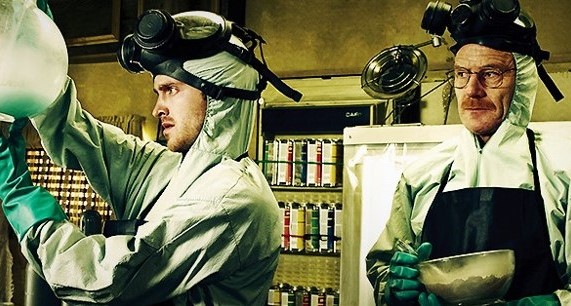To use the BHWD Program you must:
- Operate and generate hazardous waste within Larimer County
- Fall under the classification of Very Small Quantity Generator (VSQG)
- Generate waste approved through BHWD.
- Set up an appointment with a Hazardous Waste Technician to deliver waste during business program hours. Call (970) 498-5773 to schedule.
- Package waste in containers 5 gallons or smaller. Containers larger than 5 gallons must be preapproved.
- Package waste in original containers with legible labeling or bring SDSs to accompany waste. Unknown waste is not accepted.
Examples of businesses that participate in BHWD include:
- Auto repair shops with cleaning solvents and used oil
- Woodworkers with solvents, varnish and stains
- Exterminators with pesticides and herbicides, etc.
A VSQG is a business that is exempt from most state and federal hazardous waste disposal regulations, as long as it generates very small quantities of hazardous waste and ensures delivery of its waste to a facility that is permitted to receive it.
Specifically, a VSQG:
- Generates no more than 100 kilograms (about 220 pounds or 25 gallons) of hazardous waste in any calendar month
- Generates no more than 1 kilogram (about 2.2 pounds) of acutely hazardous waste in any calendar month
- Never accumulates more than 1000 kilograms of hazardous waste on-site
Larimer County businesses can request a free site visit. As a non-regulatory agency, we will walk through your site with you and offer suggestions on how to manage and dispose of hazardous materials safely. Call during business hours to schedule: (970) 498-5773.
By being a part of BHWD, Larimer County businesses can:
- Save money when managing smaller quantities of hazardous waste
- Be assured that business wastes are properly disposed and recycled
- Receive on-site assistance with waste identification and suggestions for waste minimization
- Help protect ground and surface water.
Did you know that bulbs contain mercury and should not be discarded with regular trash? But you can safely dispose of them through BHWD.
For more information, visit the Colorado Department of Public Health and Environment's "Mercury" page.
Find out about managing batteries as Universal Waste in this guidance from the Colorado Department of Health and Environment.
On July 31, 2001, electronic devices and components (such as, but not limited to, computer monitors, central processing units and printers) were added to the Universal Waste Rule, which was created by the federal government to assist businesses and agencies that handle certain frequently generated hazardous wastes. Other items that may be included under this rule are batteries, mercury-containing lighting wastes (such as fluorescent light bulbs), and aerosol cans.
If a business has electronics it no longer needs, the most practical choice is to recycle them as a universal waste rather than dispose of them. Disposal of these wastes is difficult to control because of their widespread use. The rule is intended to provide a set of reduced management standards that lessen the regulatory burden and encourage recycling for those wastes generated. Under the Resource Conservation and Recovery Act (RCRA), if materials that are considered universal wastes are not managed under the Universal Waste Rule, then they are subject to full compliance with hazardous waste rules such as labeling, manifesting, training and time limits.
If you have wastes that can be declared universal wastes, guidelines for handling them can be found in the Colorado Hazardous Waste Regulations 6 CCR 1007-3 Part 273.
For complete details regarding these regulations as well as other useful information, access the Colorado Department of Public Health and Environment's hazardous waste page. Or call the Larimer County Household Hazardous Waste Program at (970) 498-5773 with questions.
Electronics Recycling Resources:
Does your business have vape waste to deal with? If you're feeling stuck, follow this link to a Vape Waste Resource Google Drive folder.
Tips for Larimer County Vape-Waste Generators
Colorado Department of Health and Environment Guidance (scroll down to "Management of E-Liquid Waste")

